Allied Landings in Sicily: Ross Munro Reports
Canadian Troops "Stroll In"; Montgomery Dashes
We landed but there is so much yet to do. Don't start takin' it easy!!
From the July 13, 1943 issue of The (Montreal) Gazette
Introduction:
The Tuesday newspaper, issued on D-Day+3, contains a lot of news concerning Montgomery's plans and activities related to his progress on the eastern shores of Sicily near and north of Syracuse. A lengthy report follows, including details re American forces under Gen. G. Patton's leadership. As well, Ross Munro, a well-known (the best-known??) Canadian war correspondent, also shared a lengthy report about the progress of Canadian troops that landed on the southern shores of Sicily.
Beachheads are being formed successfully, with huge amounts of supplies being transported from countless Allied ships to shores still under some enemy fire. Canadians in Combined Ops, working on the eastern shores near Syracuse, report attacks and bombings from German planes occurred every two hours for three days straight. Allied planes - including Canadian airmen - eventually took control over an airfield near GEORGE Sector, about 10 km north of Avola and the same distance south of Syracuse, and that brought some relief to Canadian landing craft crews.
Canadian troops land at Pachino; RCNVR transport supplies near Avola
Map as found in Combined Operations by Londoner Clayton Marks
Excerpts from Canadian Navy memoirs to follow:
Information follows from both eastern and southern shores of Sicily:
I wonder if the report above concerning "first enemy air attacks Sunday" (aka D-Day+1) was generated as Canadian Flotillas of Landing Craft were getting pasted by the Luftwaffe at or near GEORGE Sector? Lt. Cmdr. Jake Koyle, with the 80th Flotilla (incl. my father Doug Harrison), writes the following:
(*LCT - Landing Craft, Tank; LST - Landing Ship, Tank. GH)
Learn more about Landing Craft, Tanks at CombinedOps website
Learn more about Landing Ship, Tanks at The D-Day Story
But in the little unarmoured LCM, no one was scratched. The hands on the beach with beach lines to steady the craft were knocked down and Lieut. Koyle was blown back into the well deck, but the shrapnel passed over them. After such a severe shock, the LCM personnel deserve much credit for the rapid and efficient help they gave the LST's wounded, whom Lieut, Koyl removed to the hospital ship "TALAMBA".
It was with great relief that the troopers who had landed the assault forces were sailed away. There was still a tempting assemblage of shipping off the beaches, perhaps fifty vessels, and the stores they carried were vital to the operation of the 8th Army now advancing towards Syracuse. At 1530 the first serious air raid took place but a number of dive bombers and medium bombers achieved no success with attacks which were directed mainly against transports. From then on the blitz continued throughout the night and at frequent intervals during the next 48 hours.
It was with great relief that the troopers who had landed the assault forces were sailed away. There was still a tempting assemblage of shipping off the beaches, perhaps fifty vessels, and the stores they carried were vital to the operation of the 8th Army now advancing towards Syracuse. At 1530 the first serious air raid took place but a number of dive bombers and medium bombers achieved no success with attacks which were directed mainly against transports. From then on the blitz continued throughout the night and at frequent intervals during the next 48 hours.
As recorded in Combined Operations, pages 176 - 177
After things settled down, there were frequent opportunities for visiting nearby Sicilian towns, and sampling (to say the least) the local wine, Vino. Leave expeditions were organized to Noto (15 kilometres away) and to Syracuse, where the Canadians patronized the Fascist Armoury which contained all manner of war trophies.
A lengthy account follows related to the beginning stages of the Allied march toward Messina, Sicily:
The city of Noto, mentioned above, is remembered by a few members of RCNVR: The afore-mentioned Lt. Cmdr. Jake Koyle writes:
As found in Combined Operations on page 181
MESSINA IS GOAL continues:
Discharging from LCM -
Although not so delicate an operation as loading, the unloading of an LCM required good seamanship in the beaching of the craft and good beach organization to clear the load as quickly as possible. Navy personnel did not handle cargoes once the LCM had beached but this work was done by Army personnel and by prisoners.
MESSINA IS GOAL continues:
Again, from Lt. Cmdr. Jake Koyle's lengthy report, we read a bit about "Italian prisoners... were engaged in unloading Allied supplies." Koyle writes:
Although not so delicate an operation as loading, the unloading of an LCM required good seamanship in the beaching of the craft and good beach organization to clear the load as quickly as possible. Navy personnel did not handle cargoes once the LCM had beached but this work was done by Army personnel and by prisoners.
It was, in fact, a remarkable feature of the unloading operations that Italian prisoners were found comparatively willing to do this work although the Indian regiment, who were put in charge of the Italian prisoners, were no doubt persuasive in their supervision. After the second day, a considerable number of Italians were available; before that the work had been mainly done by the Indian regiment.
Photo as found in a rare book of Canadian Navy veterans' stories re WWII
MESSINA IS GOAL continues:
'Command of the air' was a top priority for Allied commanders and eventually an airfield (at Cassibilli) near GEORGE (about 2 km inland, west) and HOW Sectors, home to the 80th and 81st Flotillas respectively, was commandeered or developed and daily tasks were made much easier as the Luftwaffe retreated.
About the airfield, within walking distance of his accommodation (a cave called 'The Savoy' by 50 - 60 Canadian sailors), my father writes the following:
“I have no mess fanny or spoon,” I said, and the cook told me there were some fellows washing theirs up and to ask one of them for the loan of their mess fanny and spoon.
So I walked over, tapped a man’s shoulder and asked if I could borrow his equipment. The man straightened up and said “sure” and it turned out to be Bill Donnelly from my own hometown of Norwich, Ontario. I got my oppo, A/B Buryl McIntyre from the cave and did the vino ever run that night. Small world.
So when we had had enough Bill crawled into his hole in the ground, covered himself with mosquito netting, and we headed back to the cave. Overhead, Beaufort night fighters were giving Jerry fighters and bombers hell. We felt the courage given us by the vino and slept quite soundly in our dank old cave ‘til morning rolled around again.
From "Dad, Well Done," page 34
In the book we read a bit about the U.S. Rangers that were landed at Arzeu, east of Oran on the North African coast during Operation TORCH. My father transported them to shore via LCAs (Landing Craft, Assault) and later their supplies via LCMs (Landing Craft, Mechanised):
From "Dad, Well Done," page 34
MESSINA IS GOAL concludes:
Concerning the last sentence, above. Some readers may be aware of the deception(s) planned by Allied leaders known as Operation Mincemeat. At least one book and two movies have been made about - what turned out to be - a rather clever ruse, to direct Axis attention to another island entirely.
...The Rangers were the counterpart to Britain's Commandos, an elite and highly trained assault force. Formed in Northern Ireland under (American Colonel William Orlando) Darby's leadership in 1942, the Rangers had already distinguished themselves in North Africa by their courage and devotion to their leader:
"We'll fight an army on a dare, we'll follow Darby anywhere."
At thirty-one years old, "El Darbo," as his troops called him, gave the impression of having been hewn out of Arkansas granite: three times in his career he spurned promotion in order to stay at the head of his troops, a varied crew that included a jazz trumpeter, a hotel detective, a gambler, and several toughened coalminers.
At Arzew in North Africa, Darby had led the First Ranger Battalion into battle, hurling hand grenades in the face of heavy machine-gun fire, "always conspicuously at the head of his troops." Operation Mincemeat by Ben Macintyre, pages 278 - 279
American troops manning their landing craft assault from a doorway in the
side of the liner REINA DEL PACIFICO... during Operation 'Torch', the Allied
landings in North Africa, November 1942. Photo - Imperial War Museum (IWM)
Two of the landing craft are numbered LCA 428 and LCA 447
[Doug Harrison, second from left, as LCA 428 is loading]
Troops and ammunition for light guns being brought ashore from a landing craft
assault (ramped) (LCA 428) on Arzeu beach, Algeria, North Africa, whilst another
LCA (LCA 287) approaches the beach during Operation 'Torch', Nov. 1942. IWM
[Doug Harrison, RCNVR/Combined Ops, centre, knee deep in 'The Med']
American troops landing on the beach at Arzeu, near Oran, from
LCA 426, some of them are carrying boxes of supplies. IWM
[My father is either handling an anti-broaching line (or rope,
far left) or sitting astride a barrel in middle of LCA 426]
A lengthy and very informative news piece by Canadian war correspondent Ross Munro follows. When he mentions 'Canadians strolling into Sicily' he is definitely not referring to the members of the Royal Canadian Navy Volunteer Reserve (RCNVR) who had volunteered for Combined Operations, and subsequently for their training related to various landing crafts. Did Ross ever travel around the SE corner of Sicily to GEORGE Sector, between Syracuse and Avola to see how the Canadians in Comb. Ops were doing?
We shall see:
But... just one note from Editor. I think Ross Munro, when mentioning "a British hospital ship in our convoy," is not referring to "a lighted British hospital ship (that) had been sunk by enemy bombers." Though a hospital ship had been sunk (i.e., HMHS Talamba, reportedly on Sunday, July 11), the event occurred in sight of GEORGE and HOW Sectors (between Avola and Syracuse, north of Cape Passero), home to the 80th and 81st Canadian Flotillas of Landing Craft on Sicily's eastern shore. Munro was reporting on Canadian troop movements and progress a few miles west of Cape Passero.
About the sinking, the afore-mentioned Lt. Cmdr. Jake Koyle writes the following in memoirs:
is GEORGE Sector. HMHS Talamba is stationed just off the coast.
Map - St. Nazaire to Singapore, Canadian Amphibious War, Vol. 1
Koyle continues:
Not until the evening of the 11th was any ship sunk or severely damaged. Then, in a dusk attack, dive bombers selected a hospital ship lying lit up some distance to seaward of its transport anchorage and sunk her in twenty minutes. According to a record kept by a stoker of the 81st Flotilla, there were twenty-three raids on "HOW" and "GEORGE" sectors in the first three days. (According to other reports, GEORGE was hit about 36 times. GH)
The hospital ship sunk at dusk on the 11th was the "TALAMBA", to which Lieut. "Koyle" had taken casualties from the LST. It was a grim business for him and his Flotilla to search the wreckage for survivors during the night. Sub. Lt. Barclay of the 80th took a prominent part in this work and describes the great difficulties of transferring wounded men from an LCM to the cruiser, H.M.S. "UGANDA", in the heavy swell that was running. Stretchers were improvised and the "UGANDA'S" aircraft derrick used for hoisting them inboard. Although a large number of the wounded were saved, most of the medical and nursing staff went down with their ship - a tribute to their heroism and devotion to duty.
Combined Operations by C. Marks, pages 177 - 178
3 Commando – the Storming of Torre Cuba [Posted on 20/05/2021 by Ian Murray]
3 Commando’s capture of the Italian strongpoint at Torre Cuba helped prepare the ground (literally) for the surrender of Italy and the signing of the Armistice.
Major Peter Young had a disappointing start to Operation Husky, the Allied invasion of Sicily on 10 July 1943. He was the commanding officer of half of 3 Commando, and he had been ordered to neutralise Italian defences on the shoulder of George Beach, prior to the main seaborne forces arriving. However he and his men spent the night in their landing craft shuttling from one wrong position to another. They finally arrived off George Beach after the assault waves had gone in and the beach had been captured. Already annoyed at missing the action, he was even more frustrated when his men were then given what was in effect a lowly garrisoning role, well behind the front lines. (Click here to read the full article.)
The hospital ship sunk at dusk on the 11th was the "TALAMBA", to which Lieut. "Koyle" had taken casualties from the LST. It was a grim business for him and his Flotilla to search the wreckage for survivors during the night. Sub. Lt. Barclay of the 80th took a prominent part in this work and describes the great difficulties of transferring wounded men from an LCM to the cruiser, H.M.S. "UGANDA", in the heavy swell that was running. Stretchers were improvised and the "UGANDA'S" aircraft derrick used for hoisting them inboard. Although a large number of the wounded were saved, most of the medical and nursing staff went down with their ship - a tribute to their heroism and devotion to duty.
Combined Operations by C. Marks, pages 177 - 178
MUNRO'S ACCOUNT continues: But...
The last paragraph above is one way to describe the role of the members of RCNVR (including my father) who had volunteered for Combined Ops and were trained to handling landing crafts, e.g., LCAs and LCMs.
MUNRO'S ACCOUNT continues:
British Commando 3 (lead by Major Peter Young, of Dieppe fame) was assigned to hit a particular shoulder of beach in GEORGE Sector on the eastern shores... but he got lost! (Maybe because the bay where GEORGE Sector was located looked like so many other bays or inlets along that part of the coast.
A story about Commando 3's bad luck begins as follows:
3 Commando’s capture of the Italian strongpoint at Torre Cuba helped prepare the ground (literally) for the surrender of Italy and the signing of the Armistice.
Major Peter Young had a disappointing start to Operation Husky, the Allied invasion of Sicily on 10 July 1943. He was the commanding officer of half of 3 Commando, and he had been ordered to neutralise Italian defences on the shoulder of George Beach, prior to the main seaborne forces arriving. However he and his men spent the night in their landing craft shuttling from one wrong position to another. They finally arrived off George Beach after the assault waves had gone in and the beach had been captured. Already annoyed at missing the action, he was even more frustrated when his men were then given what was in effect a lowly garrisoning role, well behind the front lines. (Click here to read the full article.)
After the area had been secured, the Allies converted the farmland
around Torre Cuba into Cassibile Airfield. The tower became
an air traffic control tower. Source: NARA
Editor's note: Once Cassibile Airfield was operational, my father and another mate visited it (once the routine of loading and unloading landing crafts became a more manageable task) and each write about meeting someone from their home towns while there. As mentioned earlier in this post, "The vino really flowed that night."
MUNRO'S ACCOUNT continues:
Farley Mowat, in his book "And No Birds Sang", describes one or two of his own experiences related to landing at Sicily. Click here to read Passages: Canadians on D-Day, Sicily.
MUNRO'S ACCOUNT continues:
Though Munro's report is very thorough, we're not done yet. Other news clippings from The Montreal Gazette follow:
And now a few words from Canadian political figures:
"Watch out for the alligators" takes on a brand new meaning:
Dangerous work ahead for Canadian nurses. Did they pass HMHS Talamba on their way?:
The Canadians made more than a few friends while training for many months in England:
Canadian troops (and sailors) "have given the account of themselves"... as expected:
Above we read, "A great deal of hard fighting lies ahead." Someone should make up a cartoon about that!
Photo as found in The Winnipeg Tribune
July 28, 1943 issue
"Gotta blow the dust off, Ike!":
Help Wanted. Can anyone find a better photo of the San Domenico Hotel?
It appears as if the main tower still remains! Photo - Globe Trotting
(The hotel serves as the filming location for season 2 of the
HBO series 'White Lotus', to be called 'White Lotus Sicily')
Please click here to read Research: Three Months in the Mediterranean, 1943 (6)
More to follow from The Montreal Gazette.
Unattributed Photos GH





















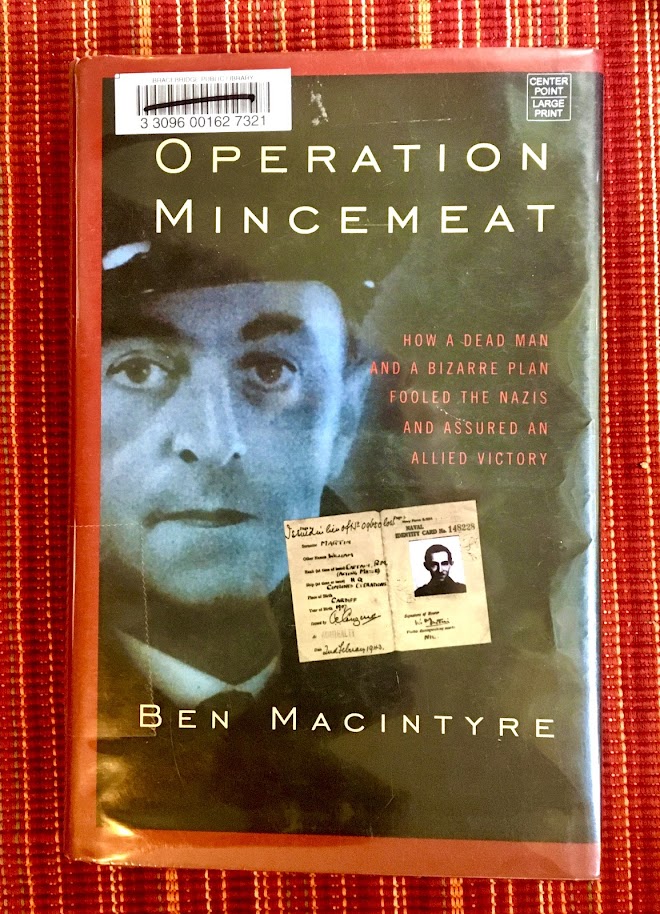








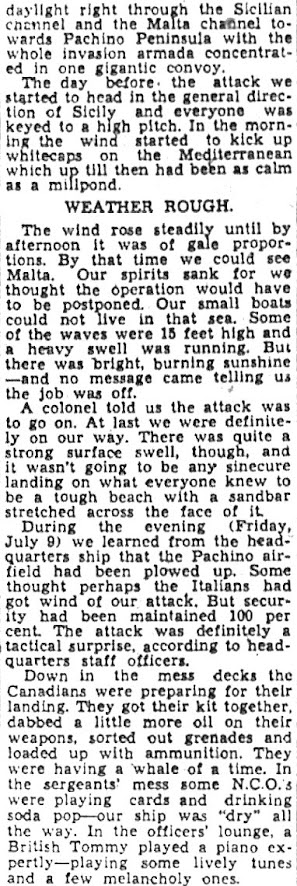














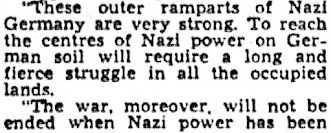









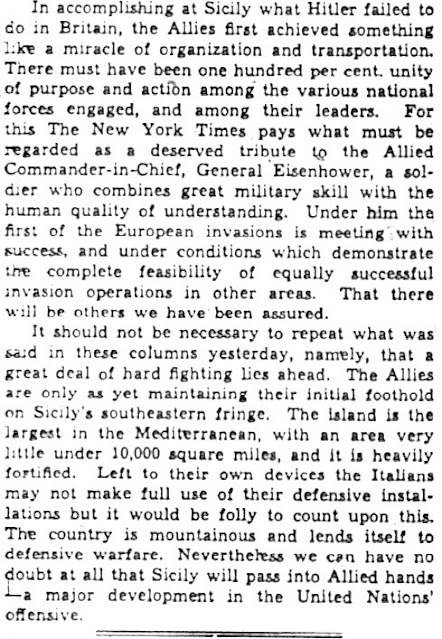





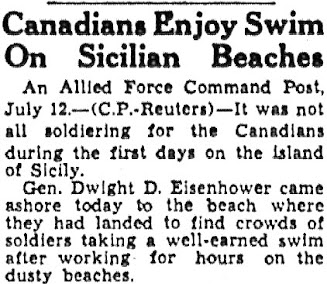





No comments:
Post a Comment